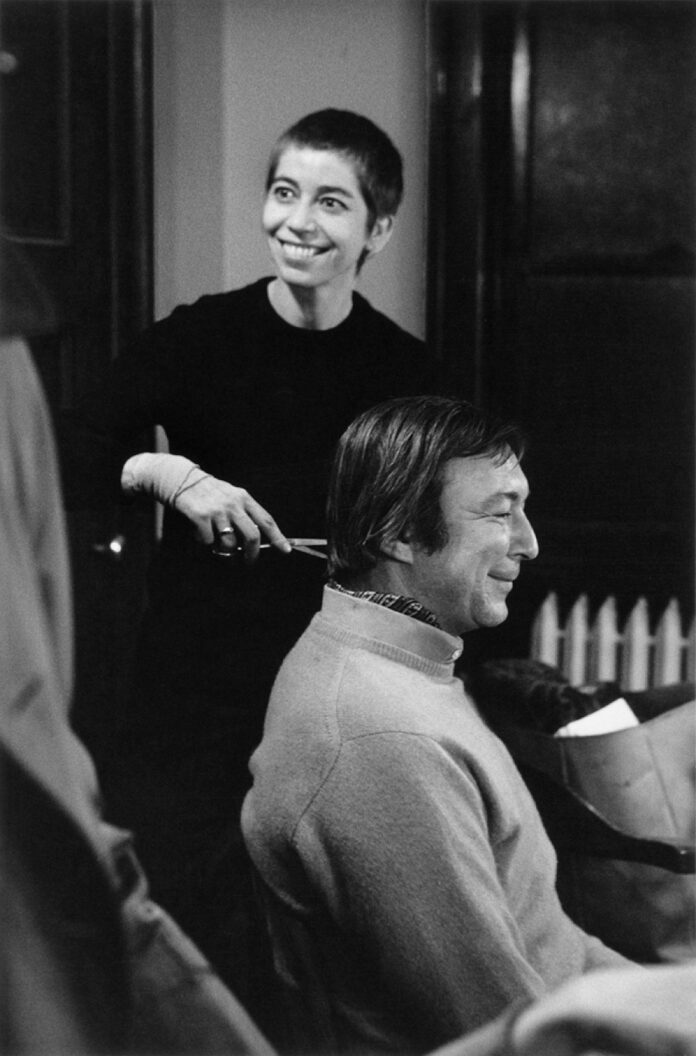The Foundation for Contemporary Arts (FCA) has recently received almost $10m in bequests and gifts, which will largely be used to fund the organisation’s $45,000 unrestricted grants to individual artists (visual, performance and sound), choreographers, composers, poets and dancers. The bulk of the money comes from an almost $9m bequest from the estate of the Los Angeles gallerist Margo Leavin—the largest single gift the FCA has received in its 60 years of existence. (Part of Leavin’s bequest will be used specifically for grants to Southern California-based artists.) The remaining funds come from the estate of the composer Alvin Lucier—to be used for grants to composers, musicians and sound artists—and the choreographer Pam Tanowitz, a 2010 FCA grantee, for the organisation’s first grants to individual dancers (named for the dancer and choreographer Viola Farber).
The FCA, founded in 1963 by Jasper Johns and John Cage (Elaine de Kooning was its founding director), uses funds raised from the sale of works donated by well-known artists to provide grants to experimental and performing artists. It all started in 1962, when Johns, Cage, Robert Rauschenberg and other major artists of the era banded together to sell their works and ephemera as a fundraiser for the choreographer Merce Cunningham to put on his first Broadway show. As the story goes, they raised so much more money than Cunningham needed that the choreographer said: “We’re all in the same boat—why don’t you give it to other performing artists?”
The FCA was initially called the Foundation for Contemporary Performance Arts, with visual artists donating their own works for auction and the proceeds benefiting performing artists. The first benefit exhibition in 1963 included pieces donated by 67 artists, including Willem de Kooning, Philip Guston, Robert Indiana, Ellsworth Kelly, Roy Lichtenstein, Marisol, Claes Oldenburg, James Rosenquist, Frank Stella and Andy Warhol. The choreographers Trisha Brown, Lucinda Childs and Twyla Tharp, and the composers Philip Glass and Steve Reich, were early grantees.
Kay Takeda, the FCA’s executive director, says that people liken the organisation to mutual aid for ephemeral art forms, adding that it was “run in an informal way for the first 30 years”. Beginning in the 1980s, the FCA casually began making grants to visual artists as well—a 1984 grant helped fund James Turrell’s Roden Crater project. In 1993, the organisation started officially funding visual artists and poets, and in 2004, the name was changed to reflect that development.
Today, the FCA’s flagship programme is its unrestricted $45,000 grants, awarded to two dozen artists every year in the fields of dance, music and sound, performance art and theatre, poetry and visual art. The grants are awarded through a nomination process, and FCA staff do all of the background and portfolio research, with no input necessary from nominees, who do not even know if or when they have been considered. “Artists have no idea until they’ve won,” Takeda says, adding that because nominees are never announced, “no artist is ever rejected”. Recent grant recipients in the category of visual arts include the Chicago-based painter Mike Cloud, the Los Angeles-based sculptor Anna Sew Hoy and the Houston- and New York-based multimedia artist Kenneth Tam.
The selling of artist-donated works is still a large part of the FCA’s fundraising, Takeda says. Currently on sale, according to the FCA’s website, are more than 500 pieces by the likes of Ai Weiwei, Rirkrit Tiravanija, Carrie Mae Weems and Kiki Smith. To date, more than 1,000 artists have contributed their works to the FCA, and, together with Johns, several serve on its board of directors—including Cecily Brown, Anne Collier and the photographer James Welling.
Margo Leavin’s legacy
Welling, who lived in Los Angeles for 20 years, ran in the same circles as Leavin and knew her well. She represented John Baldessari, who was Welling’s teacher at the California Institute of the Arts and, later, his colleague at the University of California, Los Angeles (UCLA). Welling recalls that Leavin hosted great parties at her modernist house in the Hollywood Hills and “held court” in her office. “Her gallery was an LA fixture, a perfect space for art,” he says. “She really understood what the artist needed.”
Leavin’s eponymous gallery, open between 1970 until 2013, featured an impressive roster of artists, including Billy Al Bengston, Lynda Benglis, Charles Gaines, Dan Graham, Sol LeWitt and Martin Puryear. “It was the most commanding art gallery in LA,” Welling says, noting that Leavin’s Baldessari shows, in particular, were “incredibly impressive”. Leavin had a reputation as a fair dealer, a champion of Los Angeles artists and, later, a generous benefactor. “She was very concerned with artists’ wellbeing,” Welling says, adding that, before she died in 2021, Leavin had endowed a new building for art studios at UCLA, which opened in 2020—”a magnificent building to make art in”, replacing the “wonderful dump and firetrap” that was the old studio building, where Welling used to teach.
Leavin also represented and was friends with Johns, so she was well aware of the FCA and had donated money to the organisation long before her bequest. “It’s thrilling that her legacy is going to be forever honouring and helping artists,” Welling says. “I left LA seven years ago, and some things have dimmed, but not Margo’s presence.”

























